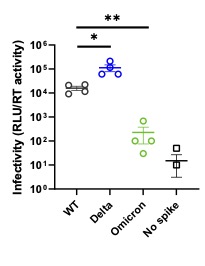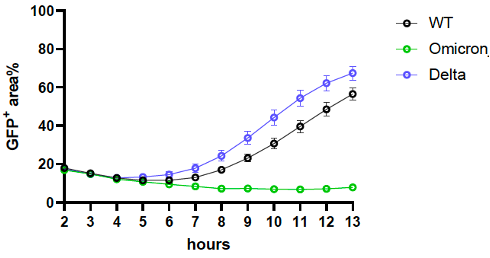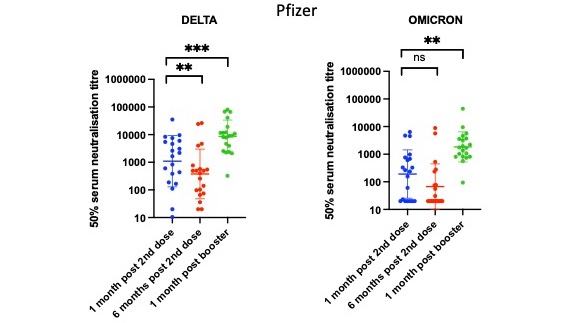Sharing some potentially significant findings relating to Omicron given the current situation. First of all huge thanks to the team working flat out- Bo Meng, @isabella_atmf and to our collaborators both in G2P, J2P along with @SystemsVirology. Findings as follows:
1. Omicron Spike protein mediates deficient cell entry and is inefficiently cleaved compared to Delta spike. We tested viral entry mediated by Wild Type, Delta and Omicron spikes using a pseudotyped virus system, infecting primary 3D lung alveolar organoids. 

2. Omicron Spike protein induces relatively poor cell-cell fusion compared to WT and Delta. We expressed spike in cells stably expressing split GFP, so that Green signal could be measured over time upon cell-cell fusion and syncitia formation. The difference is significant. 

3. What does this all mean? Efficient infection of lung cells could correlate with severity of lung disease. Syncitia or fused cells are often seen in respiratory tissues taken following severe disease. Delta was very good at both, in contrast to Omicron. Further work is needed
4. We also tested how well antibodies from vaccinated individuals neutralised Omicron v Delta. We found that Omicron was poorly neutralised after two doses of mRNA or Ad vectored vaccine compared to Delta, but that the third dose (mRNA vaccine) rescued this at an early time point 

5. In summary this work suggests that Omicron does appear to have become more immune evasive, but that properties associated with disease progression *may* be attenuated to some extent. The significant growth of Omicron nevertheless represents a major public health challenge.
some more collaborator acknowledgements @JooHyeonLeeLab @Adamsizler Leo James and Guido Papa @MRC_LMB , Paul Lehner lab, and @Sci_Lipi
• • •
Missing some Tweet in this thread? You can try to
force a refresh
















